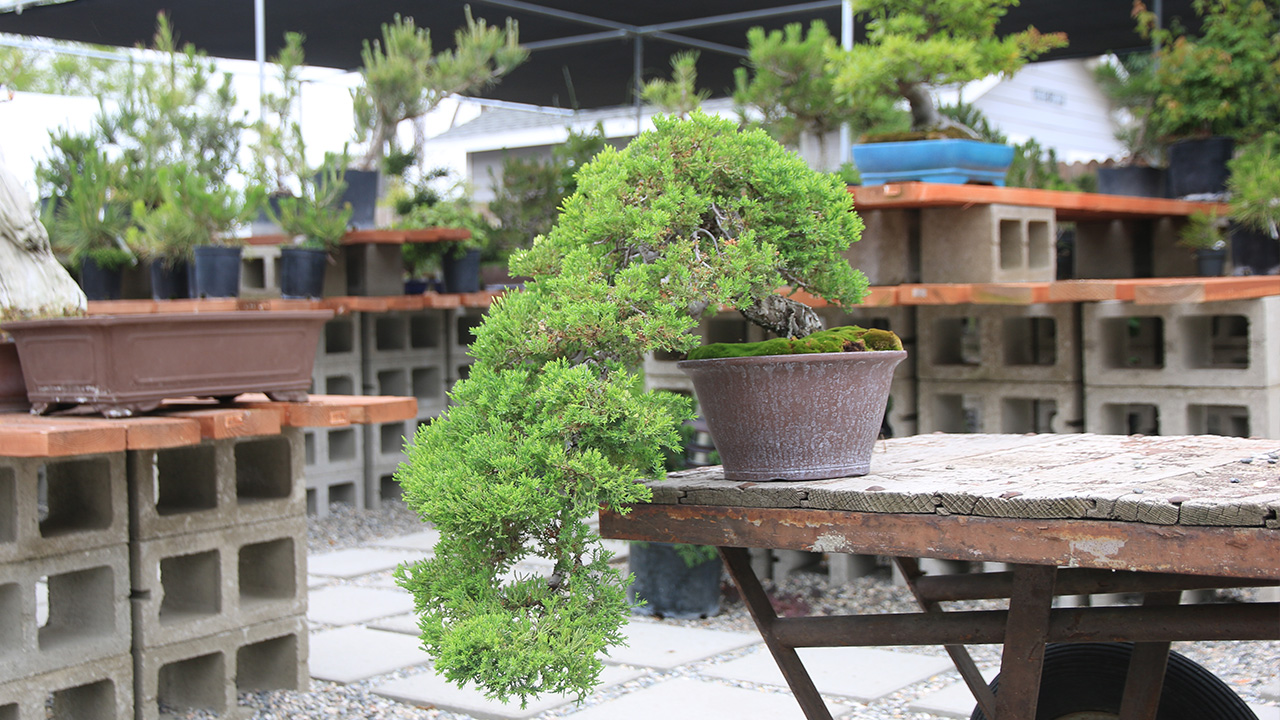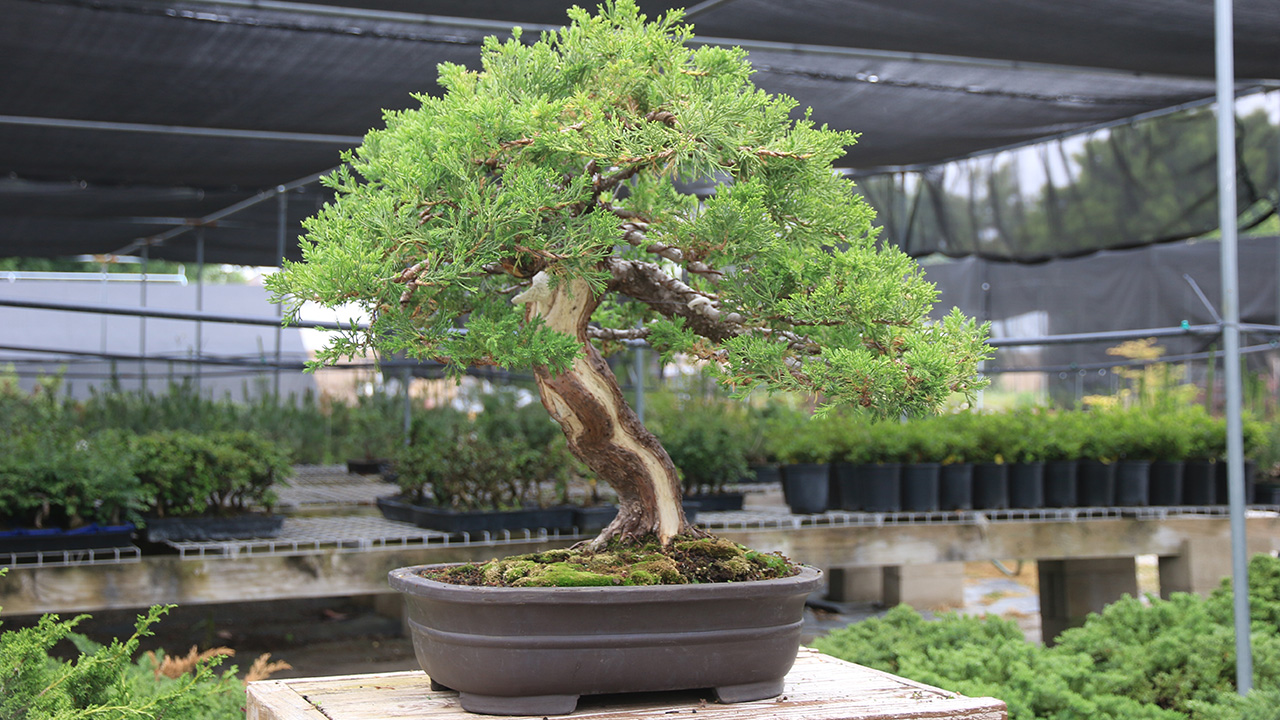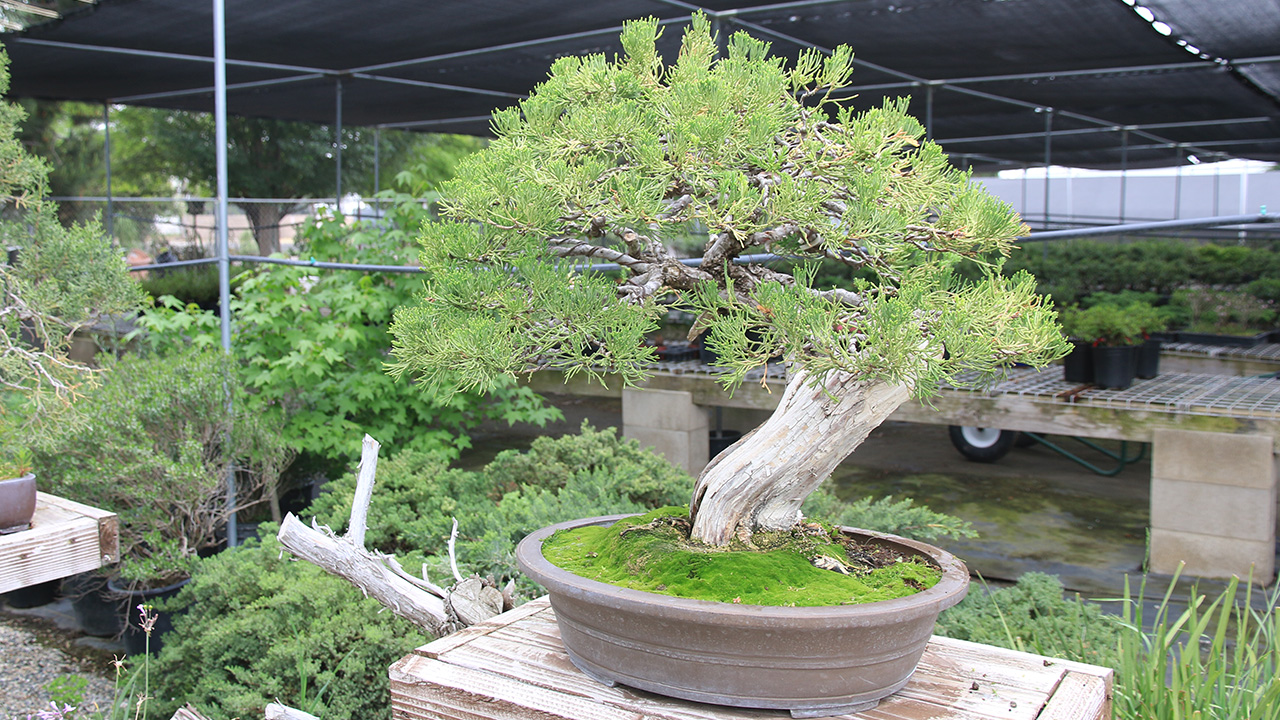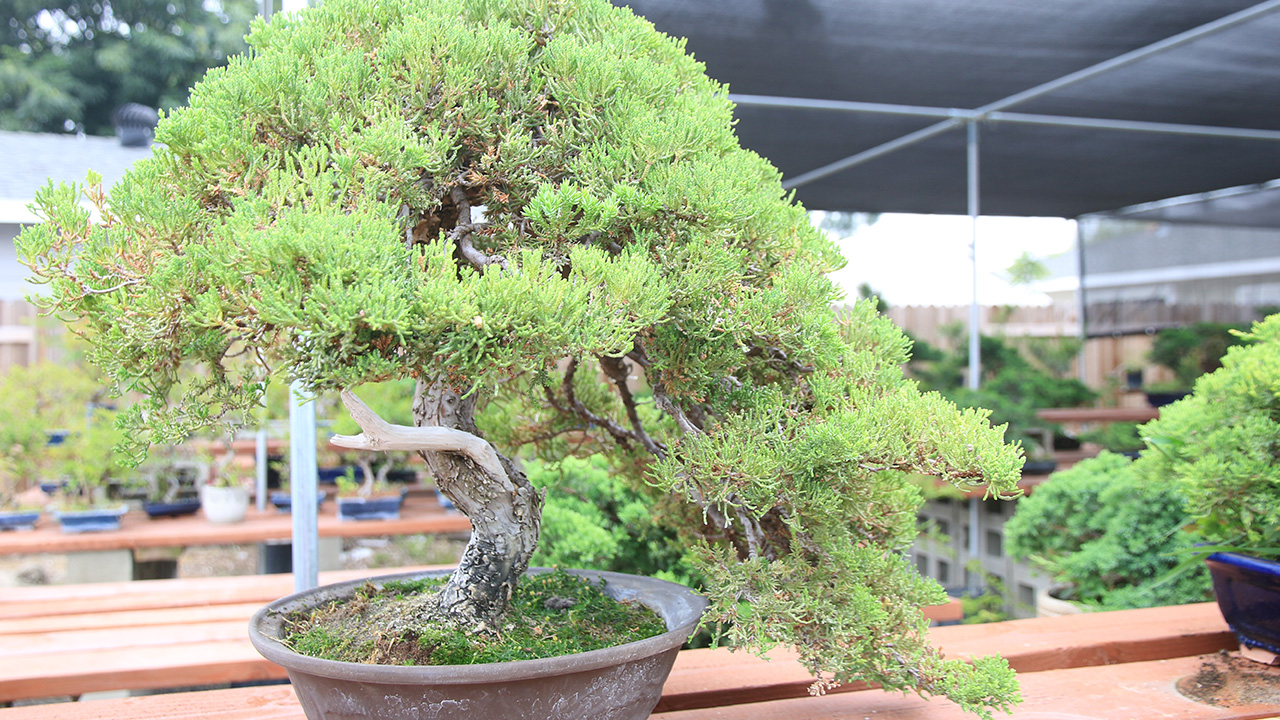There are over 50 different types of species of Junipers or Juniperus. Many of these species of Junipers do very well for bonsai due a variety of factors including foliage sizes and shape, drought tolerance, trunk resiliency, and root strength. Some of these common species include the very popular Juniperus Procumbens Nana (Green Mound Juniper) and Juniperus Chinensis (Shimpaku Juniper). However, there are many other species of Junipers that are used for bonsai . Below is a list of Junipers that we recommend for bonsai.
Juniper Bonsai Species
- Juniperus Chinensis ‘Shimpaku’ – Highly desirable species for juniper bonsai due to soft compact green foliage.
- Juniperus Procumbens Nana – Recommended for Beginners – Compact foliage, flexible branches
- Prostrata Juniper – Fast grower, leggier foliage
- San Jose Juniper- Naturally grows with trunk movement, prickly foliage
- Foemina Juniper – Features needle like foliage that grows in tight compact groupings. Best pruned with shears and pinching.
- Needle Juniper ‘Tosho’
- California Juniper – Yamadori species of Juniper found in California prized for deadwood and age
- Utah Juniper – Yamadori species of Juniper native to Utah
- Sabina Juniper – Yamadori species of Juniper found in Europe
- Rocky Mountain Juniper – Yamadori species of Juniper located in western U.S.
- One Seed Juniper – Yamadori species of Juniper, Southwest US.
Things to Note
There is a wide range of Juniper species to choose from when it comes to bonsai. Many of these junipers are often used for landscapes as well.
However, not all landscape Junipers do well as bonsai. Try to avoid species that have long leggy foliage with foliage that stretches too far from the branches.




Lighting
Junipers do best in outdoor settings with natural sunlight and a free flow of air. Most junipers do best in full sunlight even in extreme heat. However, during the hotter months, watering must be monitored to prevent your tree from drying out.
Watering
Junipers require moderate watering. Daily waterings are best during the warmer seasons. During the hottest months, multiple waterings may be required depending on your tree and location. During this time, we recommend once in the morning and again before the afternoon heat. Moisture should always be present in the soil and should not be allowed to dry out. We recommend using a soft spray to soak the soil. Ensure that the water penetrates not only the topsoil but also into the roots by checking that draining is occurring at the bottom of the pot. To do this, watering your tree thoroughly once, then repeat again 5 minutes later after the initial watering has penetrated the topsoil. On the second watering, the water will seep further into the soil and into the roots. This process can also be repeated a 3rd time for best results.
The quality of your soil mix and climate will impact your watering requirements. Depending on your soil quality, your tree may require more frequent waterings (faster drainage) or less waterings if you live in a more humid environment. To learn more about soil mixes, we recommend watching our video on soil mixes.
“Many of these species of Junipers do very well for bonsai due a variety of factors including foliage sizes and shape, drought tolerance, trunk resiliency, and root strength.”
Fertilizing
Fertilizing can help your tree grow much quicker as well as help it protect itself from insects, pests, and diseases. Slow release granules work extremely well with Juniper bonsai. Once placed on your the topsoil of your tree, the granules will slowly dissolve with every watering. The fertilizer granules will break apart and provide nourishment to the tree’s roots over time.
Once the granules or tablets have dissolved you can add more to continue feeding your tree. We recommend feeding your tree from Spring to Fall, scaling back during the Winter. Follow the instructions for the fertilizer to prevent overfeeding and burning of foliage. Over fertilized trees are at risk of burned leaves and possible death if used incorrectly.
Remember that if your tree is in recovery for other reasons such as pests or underwatering, do you use fertilizer until your tree is no longer stressed. Fertilizing a sick tree may cause it to die.
Temperature Requirements
Junipers can survive in a variety of climates including hot and dry conditions as well as tropical humid climates. During the winter, they can also tolerate snow conditions as long as the pots and roots are overwintered or protected from freezing. The hardiness of the Juniper makes it an ideal species for bonsai.
Pests & Diseases
Common issues with Junipers are mites. The types of mites can range from larger mites that are easily seen no the tree’s foliage to spider mites that are almost invisible to the eye. Fungus gnats can also pose a problem if soil conditions are too damp.
To prevent insects from harming your tree, we recommend preventive spraying with the use of neem oil or year round oil. Applying this before the active spring insect season will prevent outbreaks. However, they can also be killed with Neem oil or simple diluted household dish detergent. The key to stopping the cycle of bugs is to spray 7 days after the first application. This will eliminate any newly hatched eggs.
Fungus issues can be a problem in cooler damper environments. If you see a layer on the surface of your trunk or branches, you may have a fungus issue. Proper air circulation will correct this issue. However, fungicides can also be used to kill the fungus.
Remember: Healthy trees will naturally fight away pests and diseases as well so keep your tree well hydrated and fed and your tree can natural fight away issues on its own.
Pruning and Training
Junipers grow vigorously during the spring, summer and fall months. During the spring , Junipers will develop a new flush of growth followed by growth during the summer season. In fall, junipers will also have a flush of growth but will go into dormancy once winter comes around. New growth can be easily cut back with shears to push back foliage. We recommend cutting at the sections of growth rather than across the needles to prevent the edges from browning.
Junipers can be shaped with this technique alone. However, wiring is the most used technique for shaping a juniper as wire will permit you to bend branches and place them in desirable locations on the tree. Wire can also be used to bend the trunk to create movement. To learn more about wiring and how to wire an individual branch, watch the video here.
To see how wire can be used to create movement in the trunk, click here.
Repotting
Junipers can be repotted during spring and fall for highest success rates. Avoid winter repotting as colder temperatures, as once the tree enters dormancy, the tree’s roots will not grow making it more difficult for recovery. During repotting, we recommend trimming off older roots to promote new growth. Repot as the tree outgrows the pot. Depending on the growth rate, this can be every 2-3 years.
For more details on repotting your Juniper bonsai tree, view our video here.
“Wiring is the most used technique for shaping a juniper as wire will permit you to bend branches and place them in desirable locations on the tree. “




